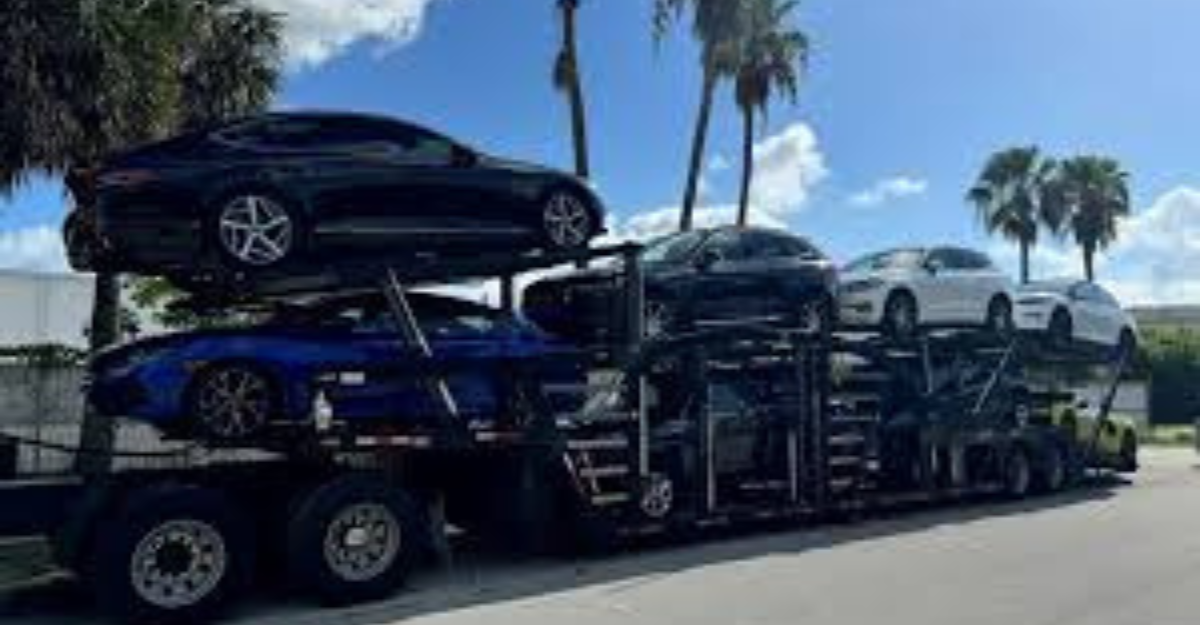Shipping a classic car requires extra care and attention compared to transporting a standard vehicle. These cars often have sentimental value, rare parts, and higher resale prices, making it crucial to choose the safest and most reliable shipping method.
In this guide, we’ll cover everything you need to know before shipping your classic car, from choosing the right carrier to ensuring full insurance coverage.
🛡️ 1. Choose Enclosed Transport for Maximum Protection
While open transport is affordable for standard vehicles, enclosed transport is the best option for classic cars. It provides protection from weather, road debris, and potential damage.
Why Choose Enclosed Transport?
✅ Fully covered trailer protects against rain, dust, and debris.
✅ Higher insurance coverage, often up to $500,000 per vehicle.
✅ Ideal for vintage, exotic, and restored cars.
✅ Specialized equipment ensures safe loading and unloading.
💰 Cost: Expect to pay 30% to 50% more than open transport.
🚗 2. Find a Reliable Car Shipping Company
Choosing the right company is key to a smooth shipping experience. Look for:
✅ FMCSA Registration: Verify USDOT and MC numbers on the FMCSA website.
✅ Experience with Classic Cars: Ensure the company specializes in high-value vehicle transport.
✅ Customer Reviews: Check Google, Trustpilot, and BBB ratings.
✅ Price Transparency: Avoid companies with hidden fees or unusually low quotes.
💡 Tip: Reputable companies like Montway Auto Transport, Sherpa Auto Transport, and Ship a Car Direct specialize in classic car shipping.
📸 3. Inspect and Document Your Classic Car
Before shipping, thoroughly inspect your classic car and document its condition.
Checklist for Inspection:
✅ Wash the car for a clear view of any imperfections.
✅ Take high-resolution photos from multiple angles.
✅ Photograph existing scratches, dents, or paint chips.
✅ Document the odometer reading before shipping.
💡 Tip: Use a smartphone with a timestamp feature to record the inspection date.
📄 4. Verify Insurance Coverage
Standard carrier insurance might not fully cover the value of a classic car.
What to Check:
✅ Coverage Limit: Ensure coverage matches the car’s appraised value.
✅ Deductible: Know how much you’ll pay out-of-pocket if damage occurs.
✅ Gap Insurance: Consider extra coverage for high-value vehicles.
✅ Certificate of Insurance (COI): Request a copy from the shipping company.
💡 Tip: If your classic car’s value exceeds $100,000, opt for additional insurance coverage.
🔧 5. Prepare Your Classic Car for Transport
Proper preparation reduces the risk of damage during shipping.
Classic Car Shipping Checklist:
✅ Clean the car: Helps identify pre-existing damage.
✅ Check fluids: Ensure no leaks.
✅ Tire pressure: Properly inflated to avoid stress during loading.
✅ Battery charge: Fully charged for smooth loading and unloading.
✅ Remove loose parts: Antennas, spoilers, or custom accessories.
✅ Gas tank: Keep it 1/4 full to reduce weight.
💡 Tip: For non-running classic cars, inform the carrier in advance. Special equipment will be needed for loading.
📅 6. Understand the Shipping Timeline
Classic car transport typically takes 7 to 14 days for cross-country shipping, depending on the route and carrier availability.
Estimated Delivery Times:
| Distance (Miles) | Estimated Delivery Time (Days) |
|---|---|
| 0 – 500 | 1 to 3 days |
| 500 – 1,500 | 3 to 7 days |
| 1,500 – 2,500 | 7 to 10 days |
| 2,500+ | 10 to 14 days |
💡 Tip: Expedited shipping is available but costs 20% to 30% more.
💰 7. How Much Does It Cost to Ship a Classic Car?
Classic car shipping costs vary based on distance, transport type, and vehicle condition.
Average Costs for Enclosed Transport:
| Route | Distance (Miles) | Estimated Cost (USD) |
|---|---|---|
| Los Angeles to Houston | 1,500 | $1,200 to $1,800 |
| New York to Florida | 1,200 | $1,100 to $1,600 |
| Chicago to Phoenix | 1,800 | $1,500 to $2,100 |
| San Francisco to Miami | 3,000 | $2,000 to $2,800 |
💡 Tip: Multi-car shipping discounts are available if transporting more than one vehicle.
📝 8. Review the Bill of Lading Carefully
The Bill of Lading (BOL) is the official shipping contract and inspection report.
Key Details to Verify:
✅ Vehicle condition at pickup and delivery.
✅ Insurance coverage details.
✅ Carrier information and delivery window.
💡 Tip: Don’t sign the BOL upon delivery until you’ve inspected the car for damage.
🚀 9. What to Do If Damage Occurs
While rare, damage can happen during transport. If your classic car arrives with new damage:
- Document the Damage: Take clear photos immediately.
- Note It on the Bill of Lading: Don’t sign until the damage is recorded.
- File a Claim: Contact the carrier’s insurance provider and submit documentation.
💡 Tip: Carriers typically process claims within 10 to 30 days.
🌟 10. Tips for a Stress-Free Classic Car Shipping Experience
- Choose Enclosed Transport: Protects against weather and road debris.
- Book Early: Especially during peak seasons (summer and holidays).
- Inspect Thoroughly: Before and after transport.
- Verify Insurance: Ensure adequate coverage for your car’s value.
- Communicate with the Carrier: Stay updated on pickup and delivery.
💡 Tip: Door-to-door shipping reduces handling and ensures safer delivery.
🛡️ Conclusion: Ship Your Classic Car Safely and Stress-Free
Shipping a classic car requires careful planning, the right transport method, and thorough documentation. By choosing an experienced carrier, opting for enclosed transport, and ensuring full insurance coverage, you can protect your valuable vehicle during transit.
To recap:
✅ Choose enclosed transport for maximum protection.
✅ Inspect and document the car’s condition.
✅ Verify insurance coverage before shipping.
✅ Review the Bill of Lading carefully at delivery.
With the right preparation, you can ensure your classic car arrives safely and ready to hit the road.








